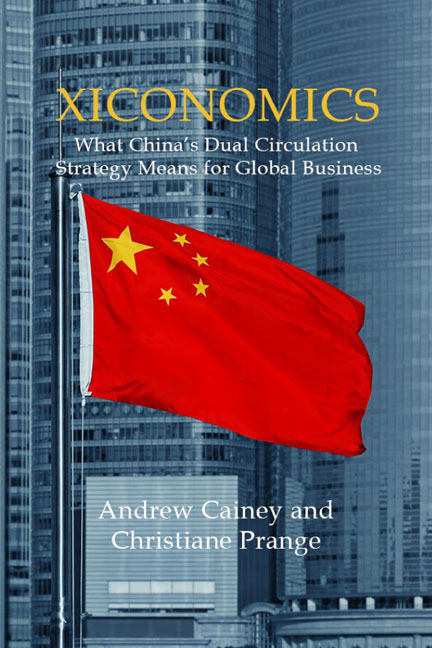5 - How will China’s internal business environment develop?
Published online by Cambridge University Press: 23 January 2024
Summary
In 2020 over 22,000 new semiconductor companies were registered in China. A new gold rush had started as entrepreneurs and businesses – from the private and state sectors alike – charged in to make money and reduce China's dependence on imported semiconductors. “Here's a new way to tell whether a Chinese company is a major player: ask the CEO if the firm is designing its own microchips,” wrote Zeyi Yang, a journalist for Protocol. The money poured in – from both state and private capital. For some, such as home appliance companies Gree, Midea, TCL and Haier, chips played an important role in product manufacturing. Huawei had made an early start. In 2004 it had established a separate company, HiSilicon, to focus on chip-making. For others, there was no clear link. They lacked the business need and had little experience but were committed to “making it big” and keen to access government or private funding on offer. And, alongside the 20,000 new companies, stood SMIC, Semiconductor Manufacturing International Corporation. Founded in 2000 as a wholly foreign-owned company, by 2020 SMIC's main shareholders were state-owned yet it was also publicly listed. SMIC had not lived up to hopes that it would challenge Taiwan's TSMC (Taiwan Semiconductor Manufacturing Company) as a global semiconductor leader. Would this mix of state and private capital, policy priority, entrepreneurialism and intense competition lead to success this time?
Semiconductors are but one sector of the Chinese economy, albeit one at the centre of China's ambitions and the push and pull of US– China relations. Away from the abstractions of economic theory, the realities of China's economic growth recipe are messy and seemingly contradictory, yet historically effective in aggregate: state ownership and private; giant corporations and small businesses; competition, coordination and coercion.
It was ever thus. In 2007 the then premier, Wen Jiabao, described China's economy as unstable, unbalanced, uncoordinated and unsustainable. His concerns were overinvestment, reckless lending, excessive liquidity, unbalanced foreign trade, inequality between cities and the countryside, inefficient energy use, wasteful allocation of resources and environmental ruin.
- Type
- Chapter
- Information
- XiconomicsWhat China's Dual Circulation Strategy Means for Global Business, pp. 61 - 80Publisher: Agenda PublishingPrint publication year: 2023



